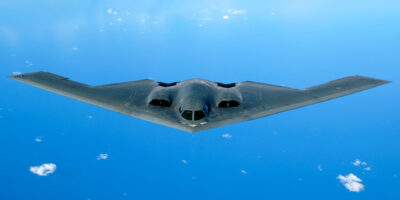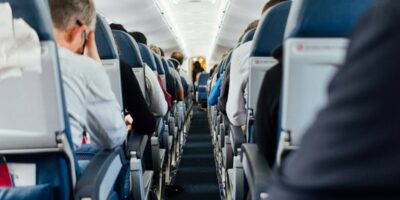Inverted Flight: Understanding the Upside-Down World
In aviation, inverted flight refers to flying an aircraft upside-down. This maneuver is not just for show; it plays a crucial role in aerobatics and even in specific tactical situations. Pilots undergo rigorous training to master inverted flight, balancing the forces of gravity and lift to maintain control. Understanding how inverted flight works requires a look at fundamental aerodynamic principles.
Fundamental Principles
Flight, whether upright or inverted, relies on the interplay between lift, weight, thrust, and drag. When an aircraft is inverted, its wings must generate lift to counteract gravity pulling the airplane down. The shape of the wing, known as the airfoil, must create enough lift in this unusual position.
While upright, the wings have a natural angle of attack to generate lift efficiently. Inverted, the angle of attack changes. The pilot manipulates the control surfaces—ailerons, elevator, and rudder—to adjust the angle and maintain stable flight. An understanding of these controls is essential for performing and maintaining inverted flight.
Role of Control Surfaces
Ailerons, situated on the wings, control roll. The elevator, located on the tail, controls pitch. The rudder, also on the tail, manages yaw. During inverted flight, these surfaces work collectively to counteract the natural tendencies of the aircraft to fall out of balance. Pilots use the control stick or yoke to manipulate these surfaces, making constant adjustments to stay level while inverted.
For instance, pushing the stick forward during an upright flight decreases the angle of attack, causing the nose to dip. Inverted, pulling the stick achieves the same result. Pilots must mentally reverse their inputs while inverted, a challenge requiring significant practice and cognitive adjustment.
Aerodynamic Considerations
Aircraft designs often include symmetrical or semi-symmetrical airfoils to aid in inverted flight. Symmetrical airfoils have identical upper and lower surfaces, allowing them to generate lift regardless of orientation. These designs are common in aerobatic planes, built specifically to perform complex maneuvers including sustained inverted flight.
Weight distribution also plays a role. Aircraft with more centralized mass tend to perform better when inverted, as this configuration simplifies control and stability. Engineers consider these factors during design to enhance an aircraft’s inverted flight capabilities.
Engine Performance
Engines are another critical factor. In inverted flight, fuel and oil systems can be disrupted if not designed for such operations. Gravity affects fluid flow differently when the aircraft is upside down. Specialized engines or modifications ensure continued performance. For example, aerobatic planes often have fuel injection systems and inverted oil systems to maintain proper engine function.
Applications in Aerobatics
In aerobatic competitions, pilots perform various maneuvers, requiring precise control and understanding of inverted flight. Stunts such as loops, rolls, and spins often involve inverted segments. Judges score based on precision, control, and smoothness. Mastery of inverted flight can significantly affect a pilot’s performance and scores.
Military Use
Inverted flight is not limited to aerobatics. Military pilots use these techniques for tactical advantage. During dogfights, inverted flight can help evade enemies or position for an attack. It allows rapid changes in direction and altitude while maintaining control and situational awareness.
Pilot Training
Learning inverted flight starts with ground school. Pilots study aerodynamic theories and control techniques. Simulators provide an initial experience without risk, allowing pilots to practice control inputs and understand the visual and physical sensations of inverted flight.
In-flight training follows, starting with basic maneuvers. Instructors guide students through slow, controlled rolls, gradually increasing complexity. Pilots practice adjusting controls instinctively, learning to manage disorientation and maintain spatial awareness.
Safety Considerations
Inverted flight poses unique risks. Disorientation can lead to loss of control. Pilots must remain vigilant about altitude and airspeed. Spatial disorientation can occur more easily when the usual visual cues are altered. Proper training mitigates these risks, emphasizing gradual skill development and emergency procedures.
Safety equipment is essential. This includes harnesses, oxygen systems, and parachutes. Aerobatic aircraft are built to withstand the additional stresses of inverted maneuvers. Regular maintenance ensures all systems function correctly under these demanding conditions.
Psychological Factors
Pilots must overcome natural instincts. The brain’s response to disorientation must be retrained. Experiencing sustained inverted flight helps build confidence. With practice, pilots learn to rely on instruments and training, rather than instinct, reducing the cognitive load and improving performance.
Inverted Flight in Commercial Aviation
Inverted flight is uncommon in commercial aviation but not entirely irrelevant. Understanding of aerodynamics from such maneuvers informs overall aircraft design and emergency procedures. Pilots trained in aerobatics may bring increased situational awareness and control skills to their commercial piloting, enhancing safety in unexpected situations.
Historical Context
Inverted flight has a rich history. Early aviation pioneers experimented with various maneuvers, paving the way for modern aerobatics. Aircraft from the early 20th century, though less capable, demonstrated the essential principles. These experiments informed later designs and techniques, advancing both civilian and military aviation.
Technological Advances
Modern technology continues to enhance inverted flight. Innovations in materials and engineering improve aircraft performance. Computer-aided design (CAD) allows precise modeling of aerodynamic properties. Advances in avionics provide pilots with better tools for monitoring and managing flight conditions.
Future Developments
Future advancements promise even greater capabilities. Unmanned aerial vehicles (UAVs) experiment with inverted flight for expanded operational roles. Continued research into human factors aims to improve training and safety. As technology evolves, so too will the understanding and application of inverted flight, pushing the boundaries of what is possible in aviation.




Subscribe for Updates
Get the latest articles delivered to your inbox.
We respect your privacy. Unsubscribe anytime.